You’ve got to hand it to Toyota, still in there with V6 petrol-powered SUVs. I guess there must be buyers out there for them, as every time there’s a new, larger Toyota SUV – there’s a V6-engined one within the range.
The last V6 petrol Toyota SUV I tested was the 2016 Prado, and I really liked it. Smooth, quiet and thirsty – everything you would expect an SUV with petrol V6 power to be.
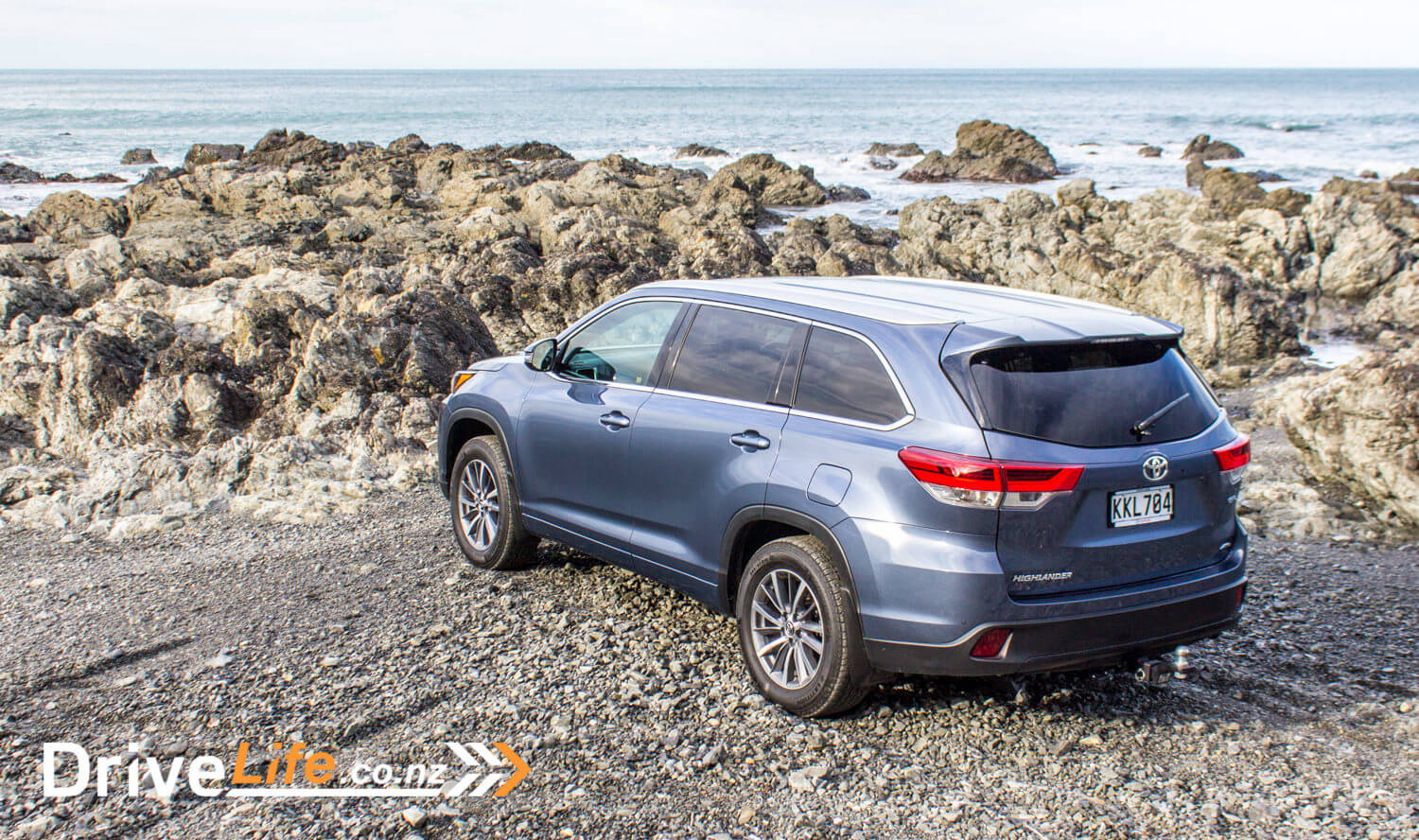
This is the 2017 update of the Highlander, which sits below the Prado and above the RAV4, and is the ‘smallest’ in the 7-seater SUV range of Toyotas. It has a new look, a new engine (with 17 more Kw of power and 13Nm more torque), and a new transmission
Is it worth the jump from the RAV4? Is it worth leaving the ever-popular $90K petrol Prado behind and down-sizing to the Highlander? Can there really be only one?
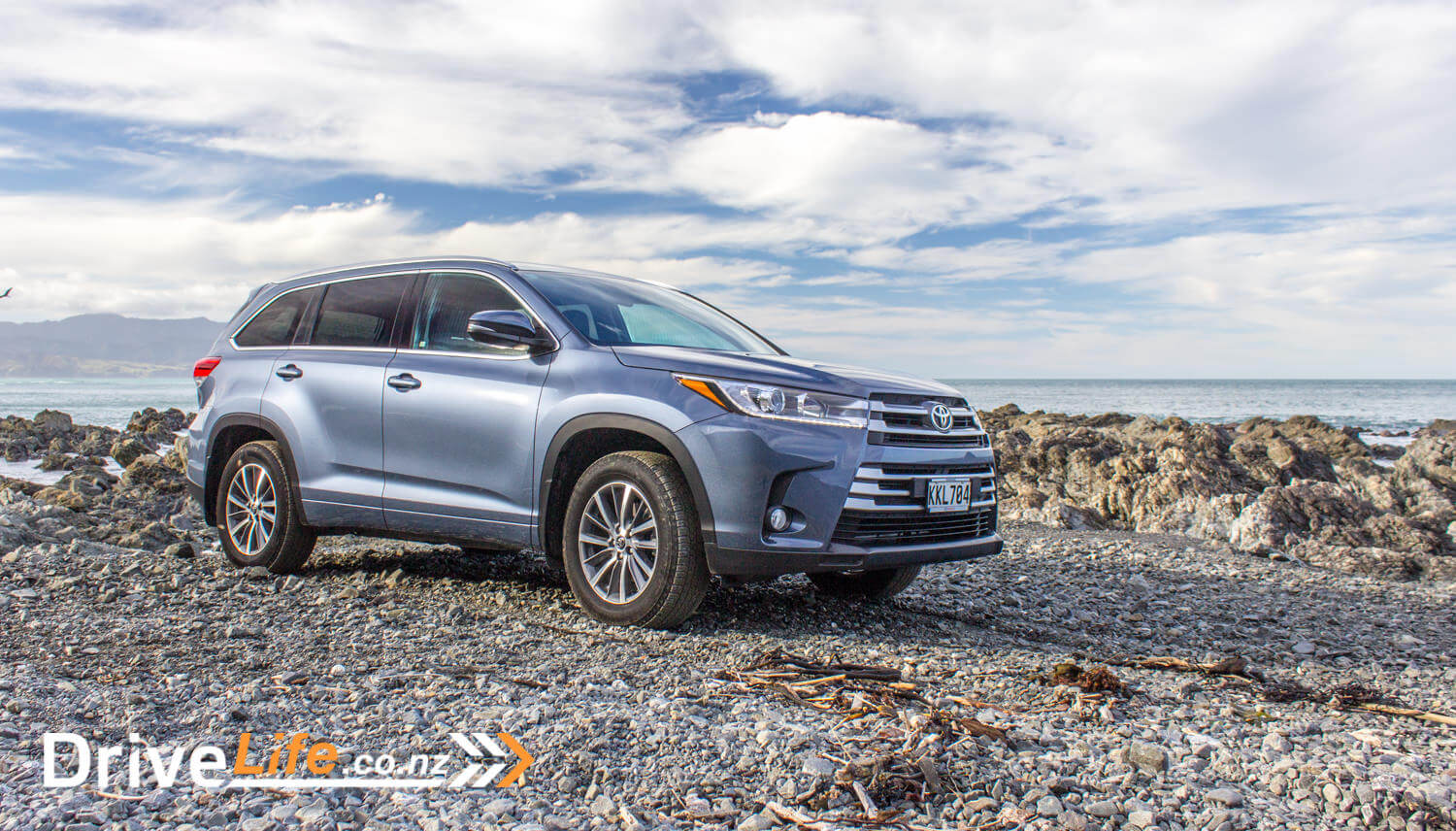
The Range
There’s just one 2WD Highlander, in GXL specifications (front wheel drive, interestingly) and priced at $66,490. Then you have a choice of 3 4WD models; the GL ($63,490), GXL ($70,490 – tested) and the top of the range Limited model ($81,490).
All have the same engine and 8-speed auto trans – there’s no manual available. The three lower models are fitted with 18” alloys, while the Limited gets 19s. All get LED DRLs, LED taillights, front fog lights, cruise control, a colour central display (6.1” in the GL and 8” for the rest), Hill Start Assist, Power Drive Mode, a 4.2” colour driver’s information display, rear parking sensors, Downhill Assist Control (AWD only), keyless entry and start, and a reversing camera.
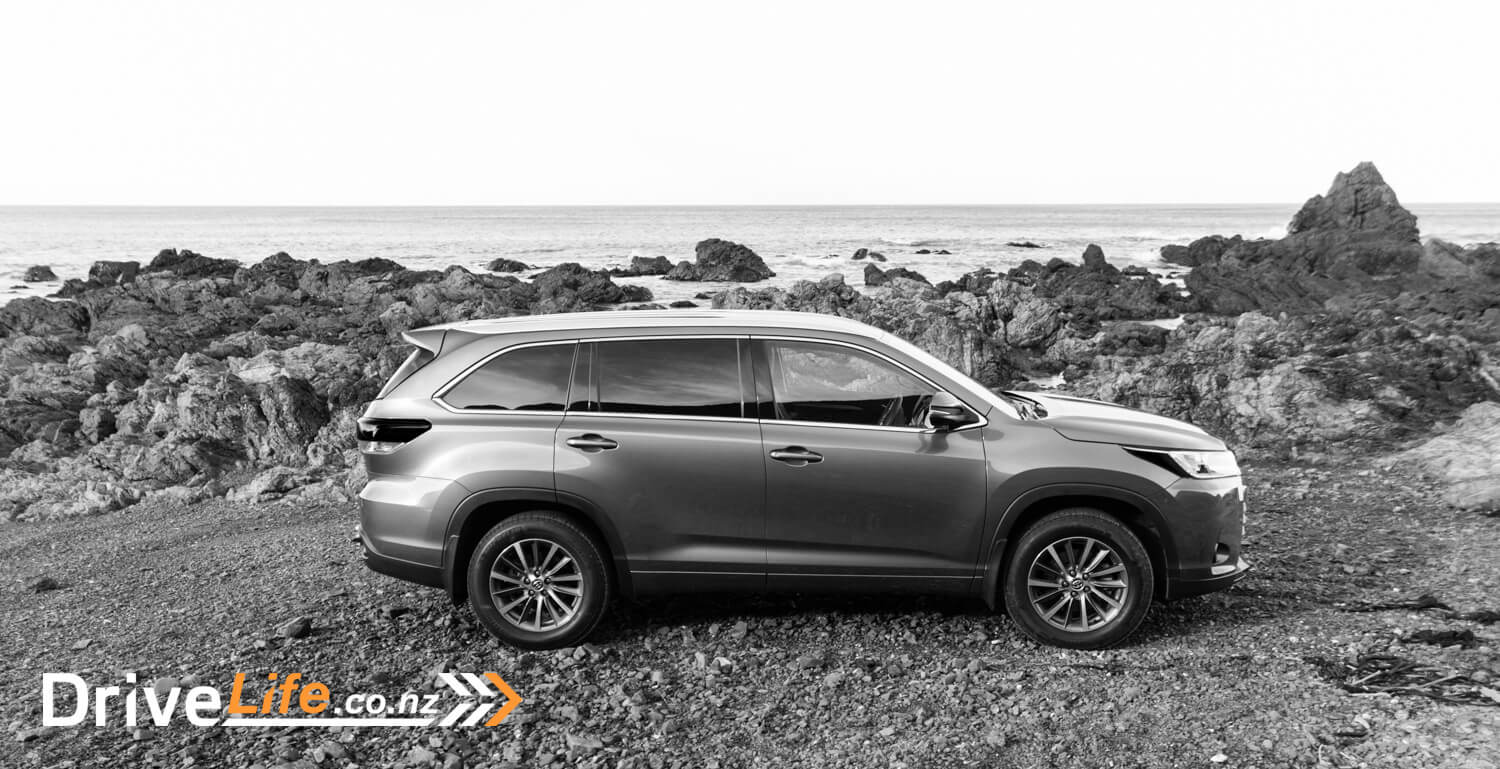
The GXL and Limited models have Satnav as standard with SUNA traffic alerts included, leather steering wheel, as well as a power tailgate with opening rear window and three zone AC.
The base GL model has cloth seats, while the rest get leather accented seating, with 4-way power adjustment for the driver’s seats and seat heaters for both front seats. The Limited also gets power passenger’s seat, adjustable lumbar support for the front seats, front seat coolers and memory settings for the driver.
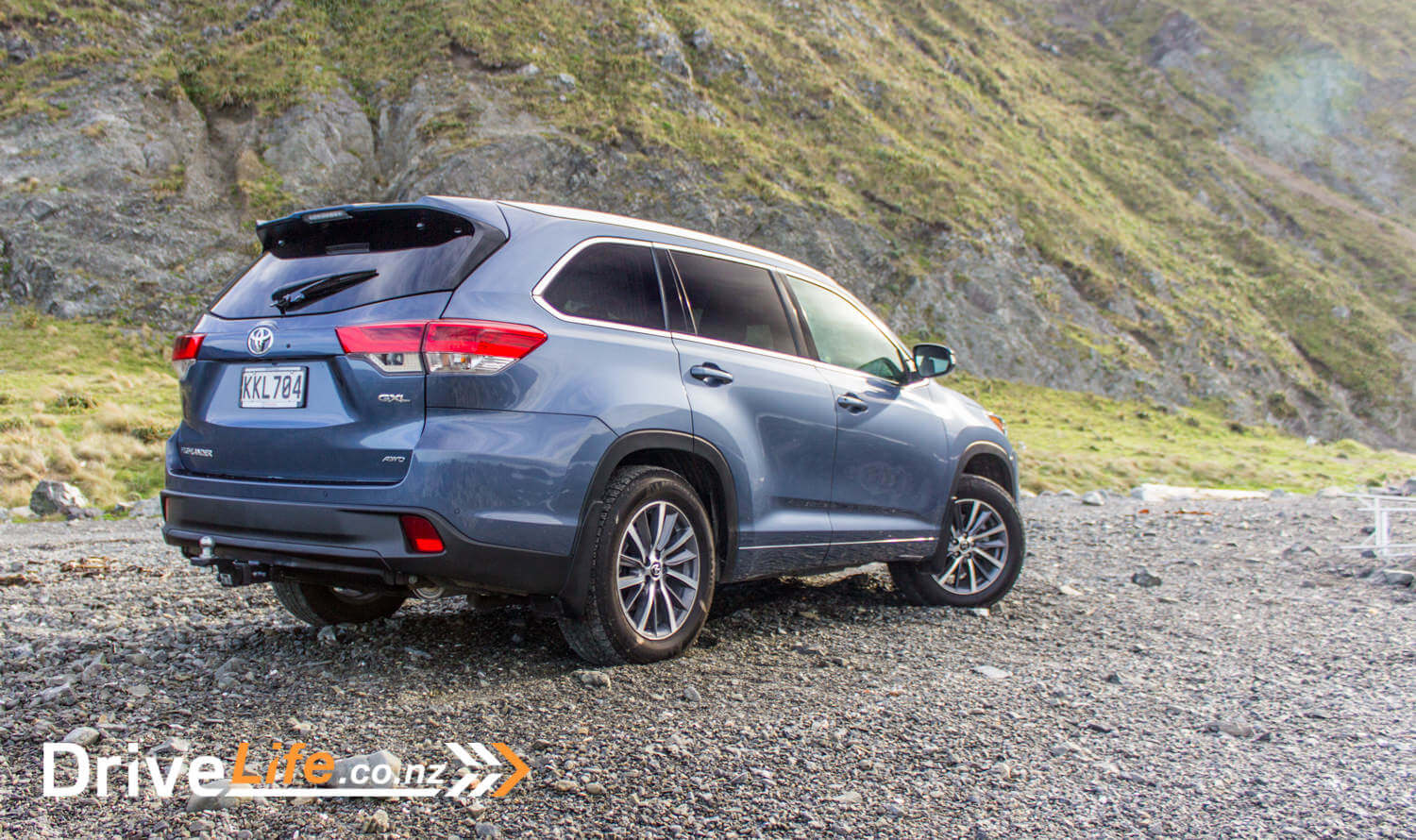
The Limited also gets a power tilt/slide sunroof, auto wipers, rear sunshades, adaptive cruise control, heated exterior mirrors, Toyota’s Safety Sense system with Pre-Crash Safety system (PCS), Dynamic Radar Cruise Control (DRCC), and Automatic High Beams (AHB). It also has Blind Spot Monitoring (BSM) with Rear Cross Traffic Alert (RCTA) and Panoramic View Monitor (which provides the driver with a live 360-degree bird’s eye view around the vehicle to see potential obstacles from all angles), Lane Departure Alert (LDA) with steering assist and vehicle sway warning system, front parking sensors and a rear seat entertainment system with 9” roof mounted colour display, remote control, SD card slot, Blu-ray and DVD player and two pairs of wireless headphones.
You have a choice of nine colours, which is great. I’m afraid most of them will be grey or silver, but there are a couple of nice reds and a Rainforest Green available as well.
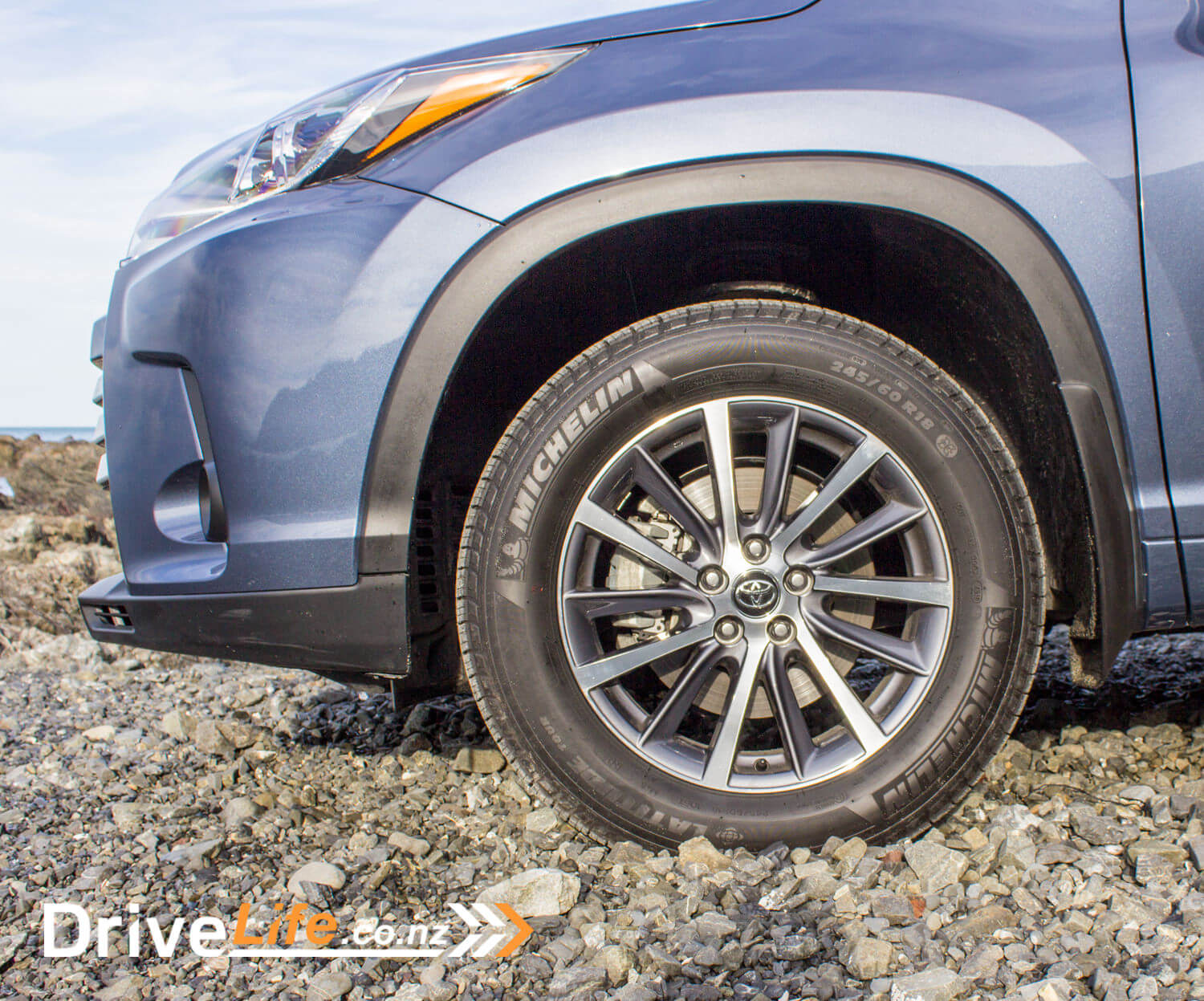
First Impressions
It wasn’t until I parked next to the previous model of Highlander that I could see the changes – this really is just a minor facelift, with the majority of changes going on under the bonnet with the new engine and transmission.
Still, it’s a nice looking SUV, nothing offensive and blends into the pack well, if that’s what you are after. I’m concerned about the front design though – it’s starting to border on that ‘gaping mouth’ look that Lexus use, and I don’t like that look. You can see it’s getting wider and wider at the bottom. It must be hard coming up with a new design every year or two, but there’s no point making it ugly. The Highlander isn’t at the point (yet) and I hope it never is.
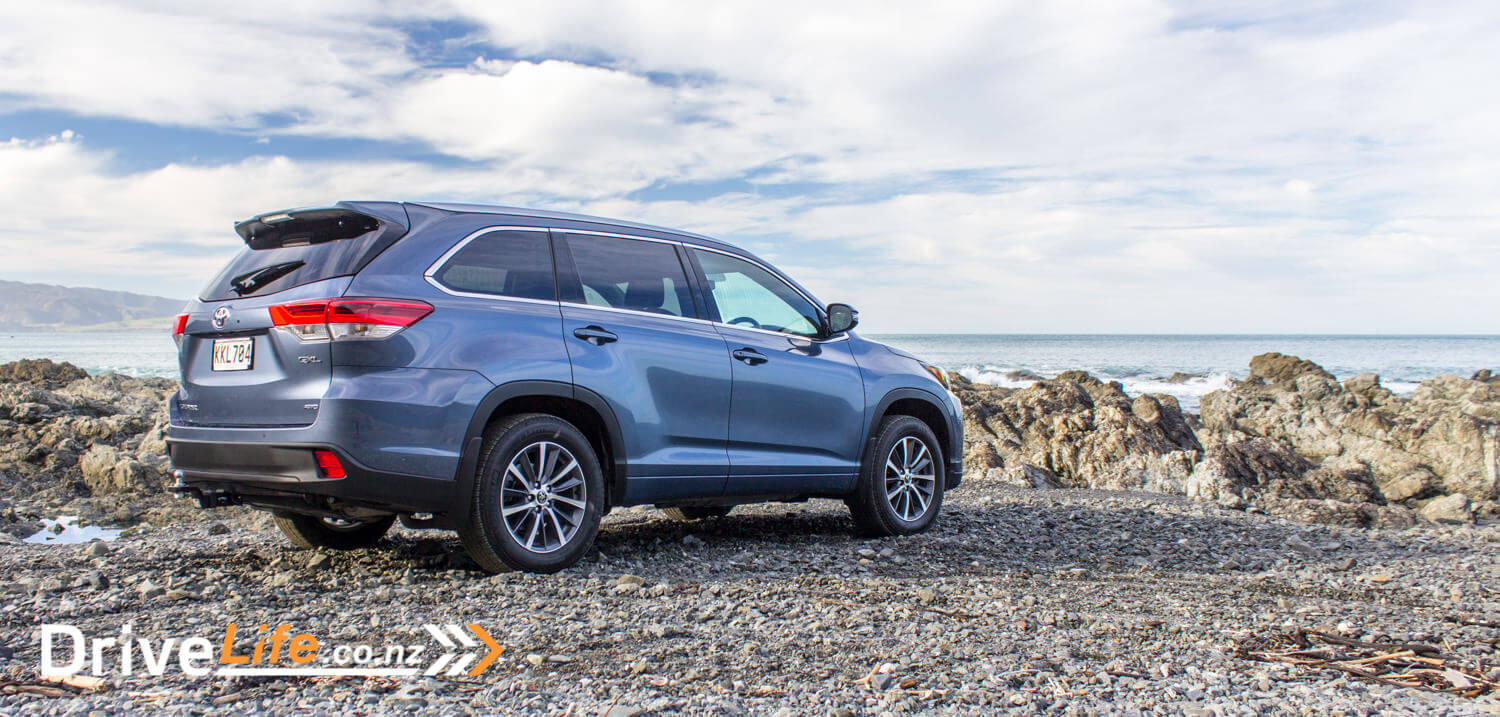
Our test car was finished in Cosmos Blue, which looked like a bland dark grey when the sun was hiding, but had a nice finish when the sun was out.
In Wellington’s small streets, it felt enormous, trying to squeeze it into gaps in the traffic. It took me three days to get used to its bulk – and this was after I had dropped off a Skoda Kodiaq only the week before. It felt both longer (it is), wider (it’s not) and taller (it is) than the Kodiaq.
The Inside
It feels very Toyota-ish when you get into the Highlander. You see the same menu system, the same controls (that cruise control stalk, ug). It’s all very familiar, and that’s not a bad thing.
As you would expect, it’s very much a climb up and into SUV, and I guess that’s why there are so many buyers for SUV – the visibility over other traffic is excellent. The seats deserve a solid mention; comfy, luxurious, supportive – spot on. Heated in the front too, and I always appreciate that when, 1; it’s the middle of winter; 2: the seats are leather.
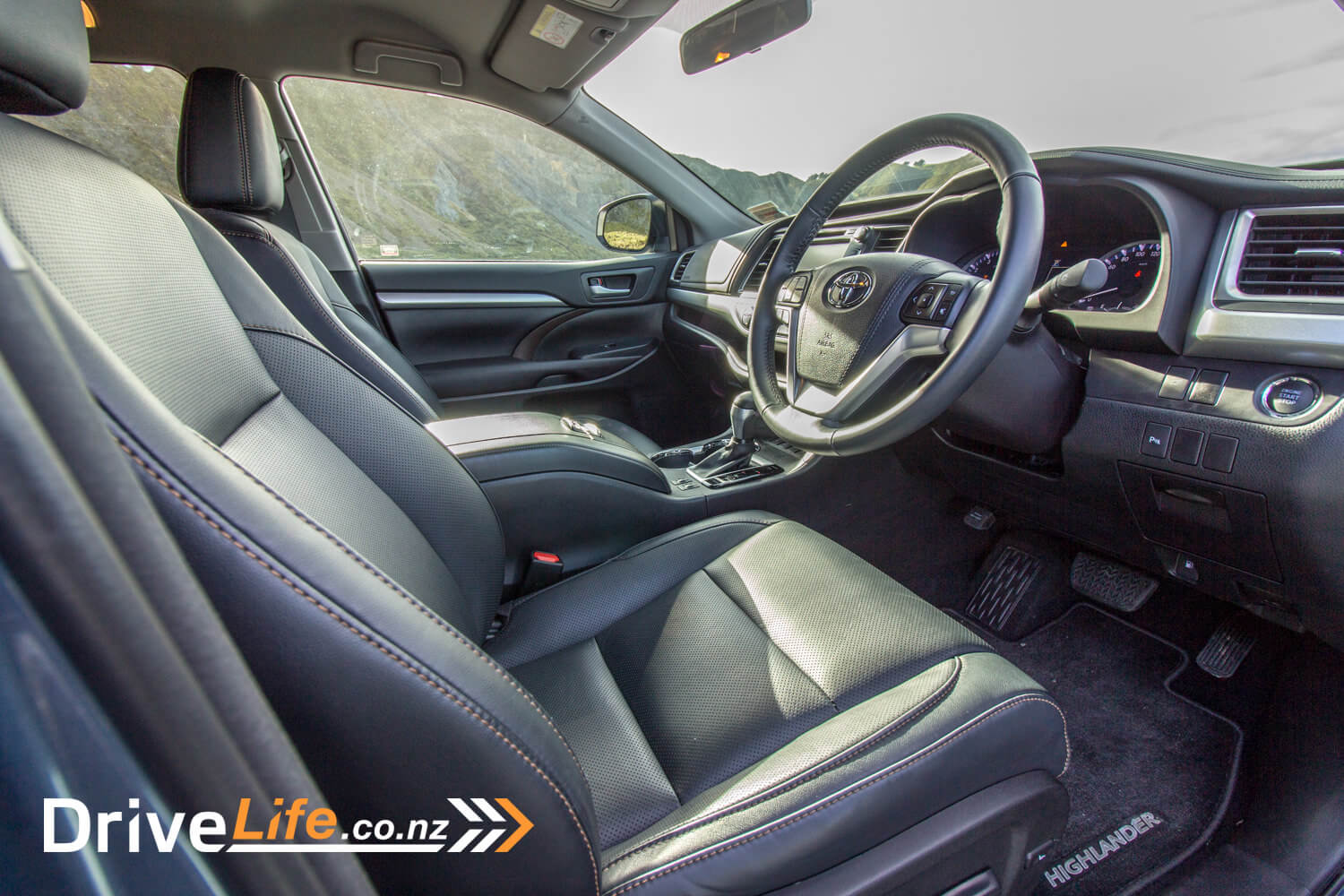
My first surprise was finding a pedal-type park brake; I would have thought this would have made way for an electric park brake by now, but then this is just a facelift model.
One thing many buyers will love and make lots of use of is the almost full-width shelf just below the AC controls. Perfect height and size, excellent for notebooks, papers, cellphones and other junk we carry around in our cars. There’s even a cable guide so you can leave your phone on the shelf and hook it into the USB port directly below on the centre console. I used this shelf constantly and will miss it heaps.
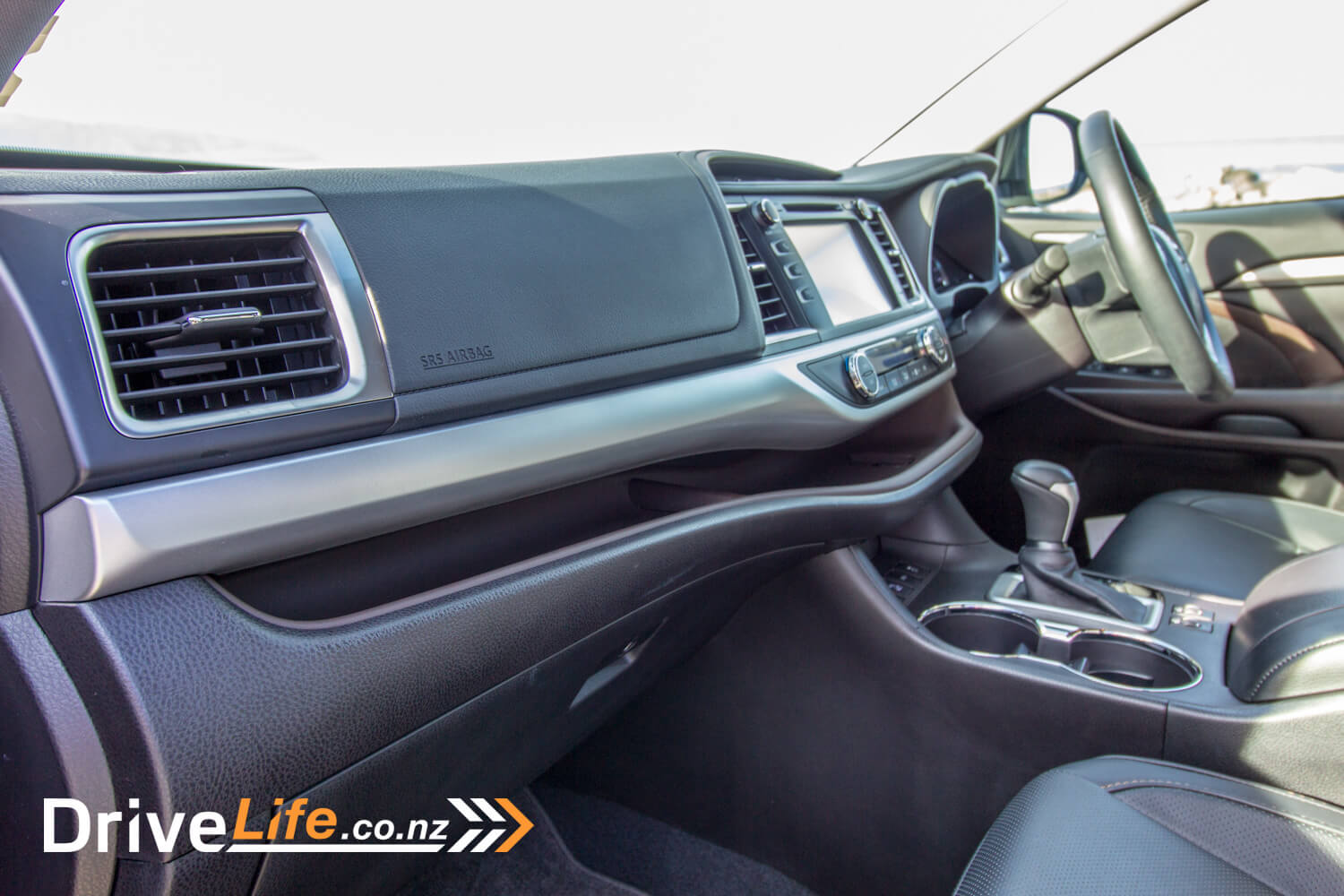
On the front of the centre console are some buttons for your AWD fun; diff lock, ‘snow’ button, Downhill Assist Control, and Traction Control on/off.
Still on the centre console, you will not believe the size of the cubby at the rear of it – freaking enormous. It would take 4 SLR cameras I expect, if not more. A 12V socket in there naturally, and also a moveable/removable shelf so you don’t lose too much into the depths of the thing. It really is massive.
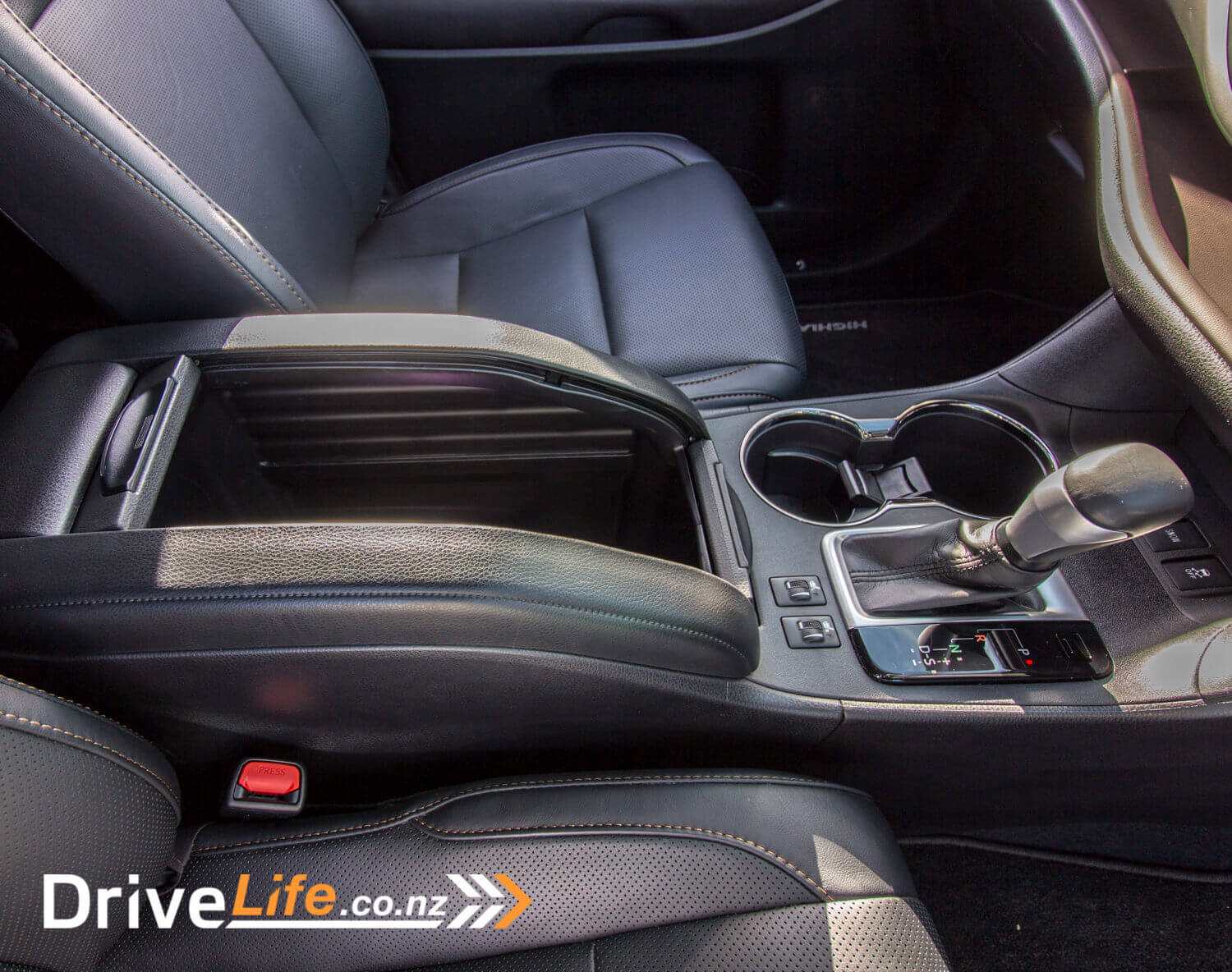
The GXL model comes with a power adjustment for the driver’s seat, with 4-way electric lumbar support, and electric adjustment for the length. Interesting how we are seeing electric length adjustment trickling down from premium brands now. The electric length adjustment for the Highlander actually rolls out from under your legs, instead of extending straight forward like others do. Still it works, and I can imagine much taller drivers would appreciate it.
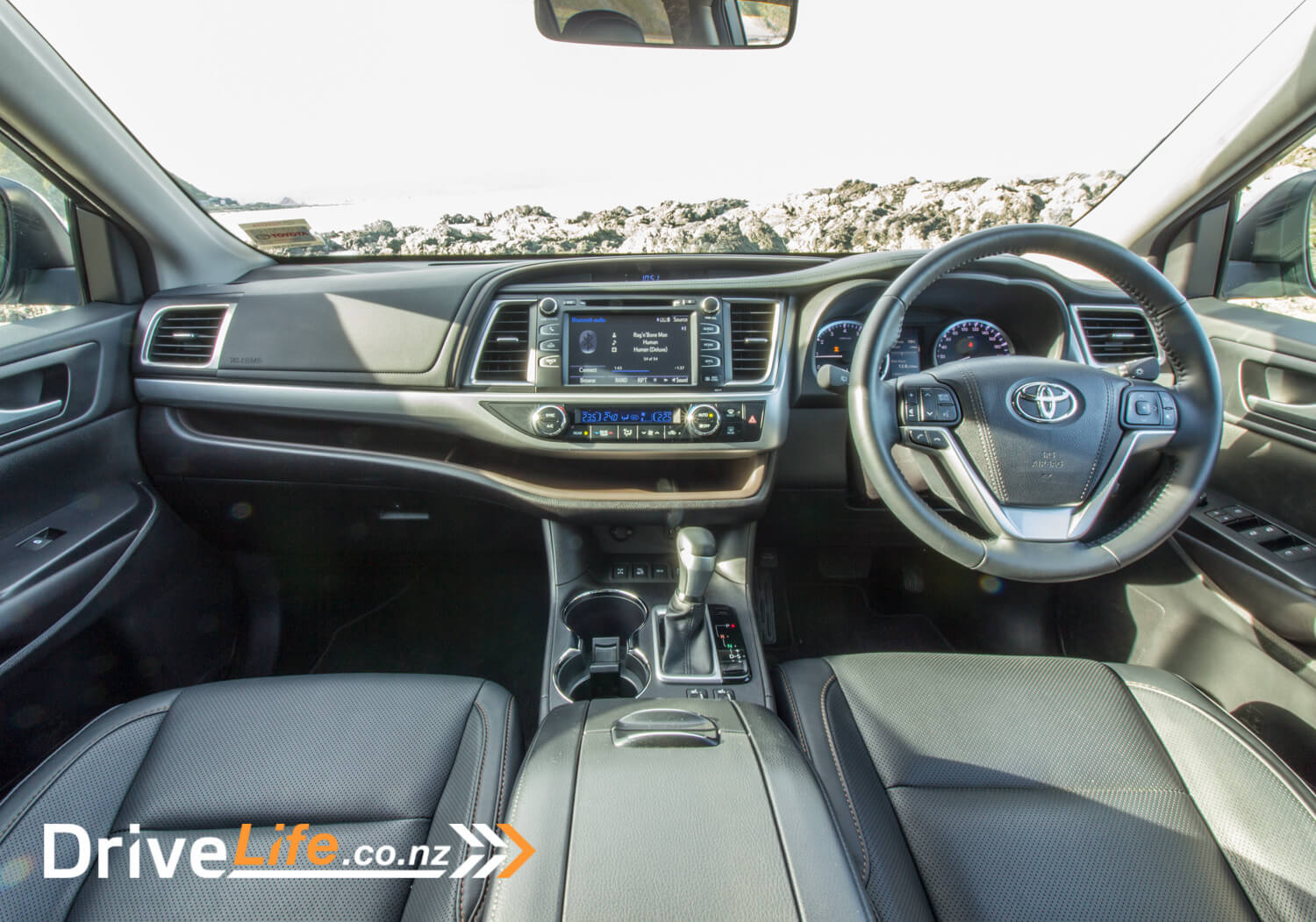
The media system is the standard Toyota fare, and it works easily and intuitively. I wonder though if it’s getting a bit dated now. After driving the Skoda Kodiaq a few weeks back, with its crisp and clear screen, well the Toyota system looks a little like it belongs to ten years ago. The system works well but the icons and screens look really low res.
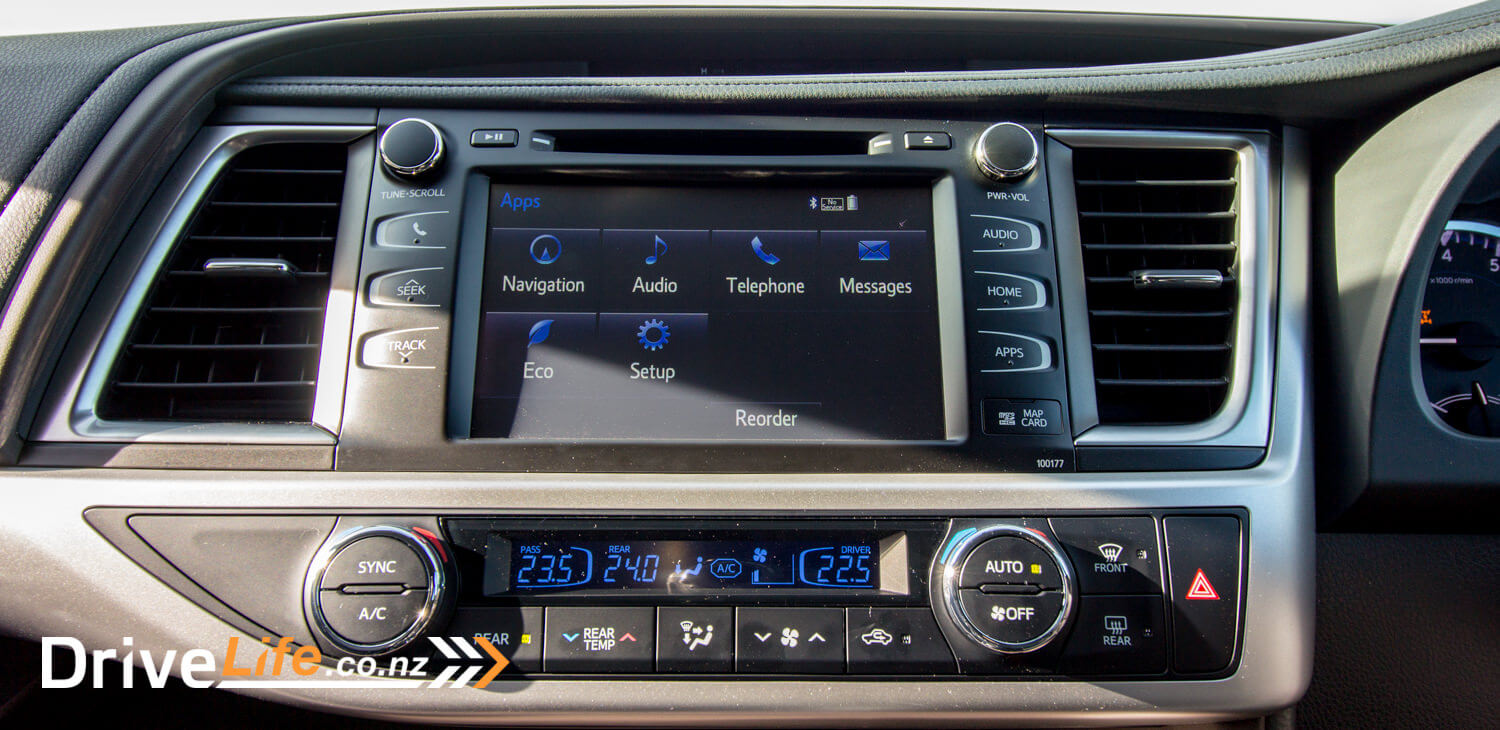
The dual-zone AC controls are a mixture of buttons and knobs, and while these work well the knobs to adjust the temperature for the driver or passenger don’t really stick out far enough from the dash. I think drivers with, uh, ‘stubby’ fingers, would struggle a bit to do this easily while driving.
There’s plenty of space in the front seats, and the passenger’s door seems a mile away from the driver’s side. Middle row passengers have it pretty good too, with an absolute abundance of legroom. You shouldn’t get any complaints from people sitting here.
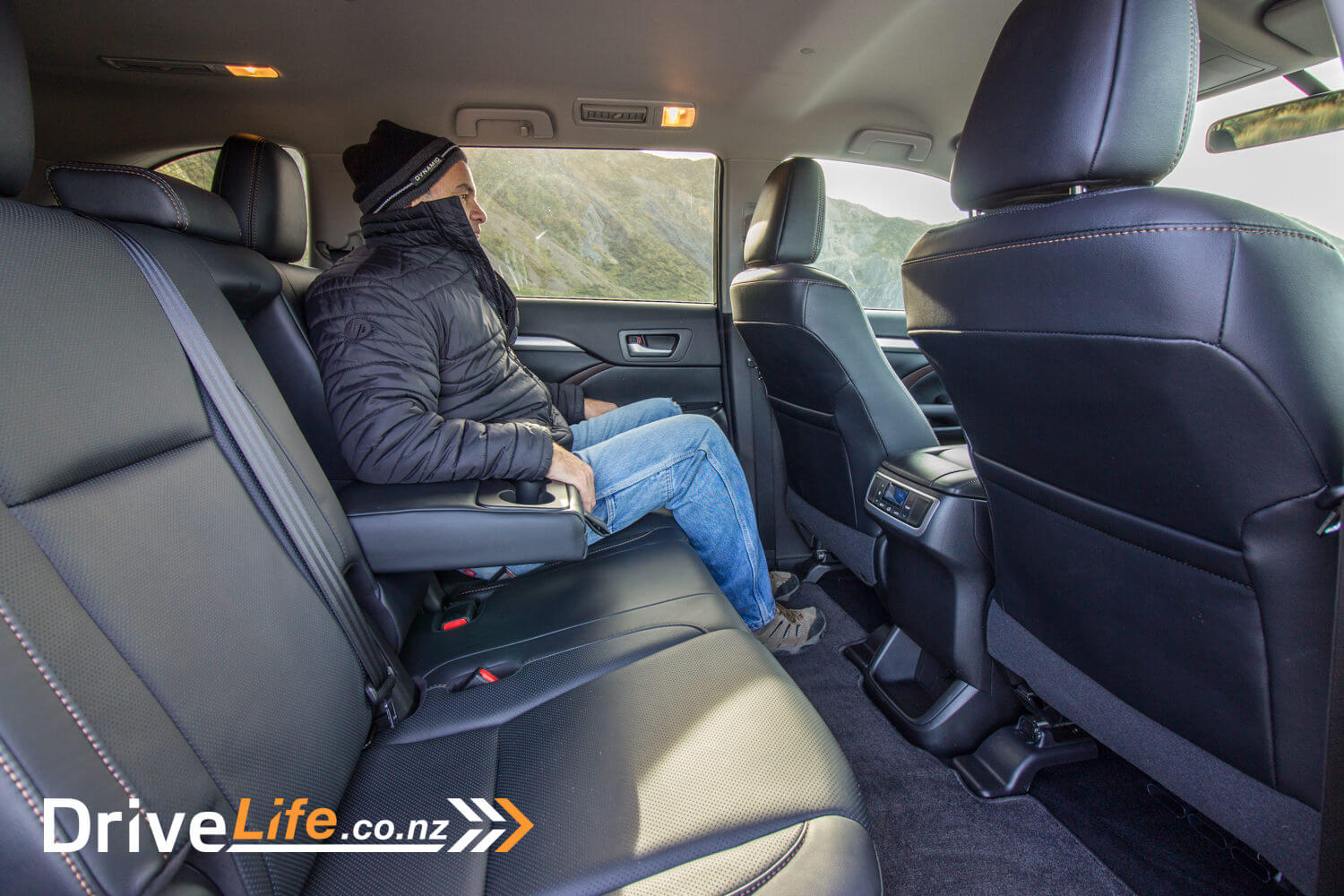
All Highlanders are 7 seaters, and I expect this is a must-have for many buyers. So, what’s the space like in the third row? Like in the Kodiaq, I put the same two teenage girls in the third row for a shortish trip. Their verdict? Comfy seats, but about exactly the same room as the Kodiaq.
And like the Kodiaq, the seat bases are fairly low, so you are sitting quite flat on the floor.
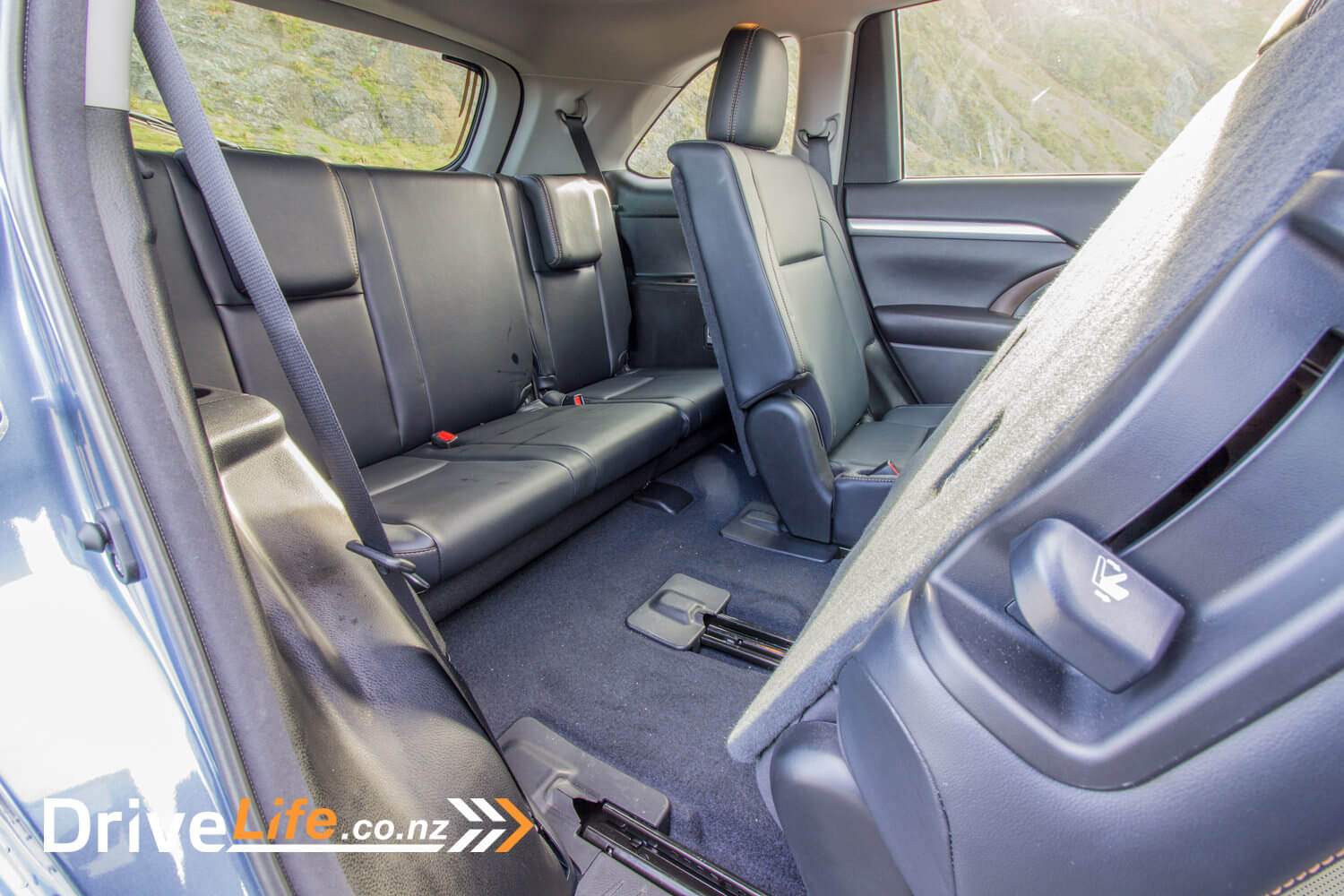
Another case of say kids under ten in here for long trips, but teenagers would be complaining after a while.
Boot space very generous with third row up at 269 litres, and it puts the 7-seater Prado to shame at 104 litres. It’s actually useable as a seven-seater without a roof pod (maybe), but then it is almost 6 inches longer. It’s got a little more space with both sets of seats folded down than the Prado too (1833 vs 1872) but neither can beat the Kodiaq’s 2,000+ litres of space.
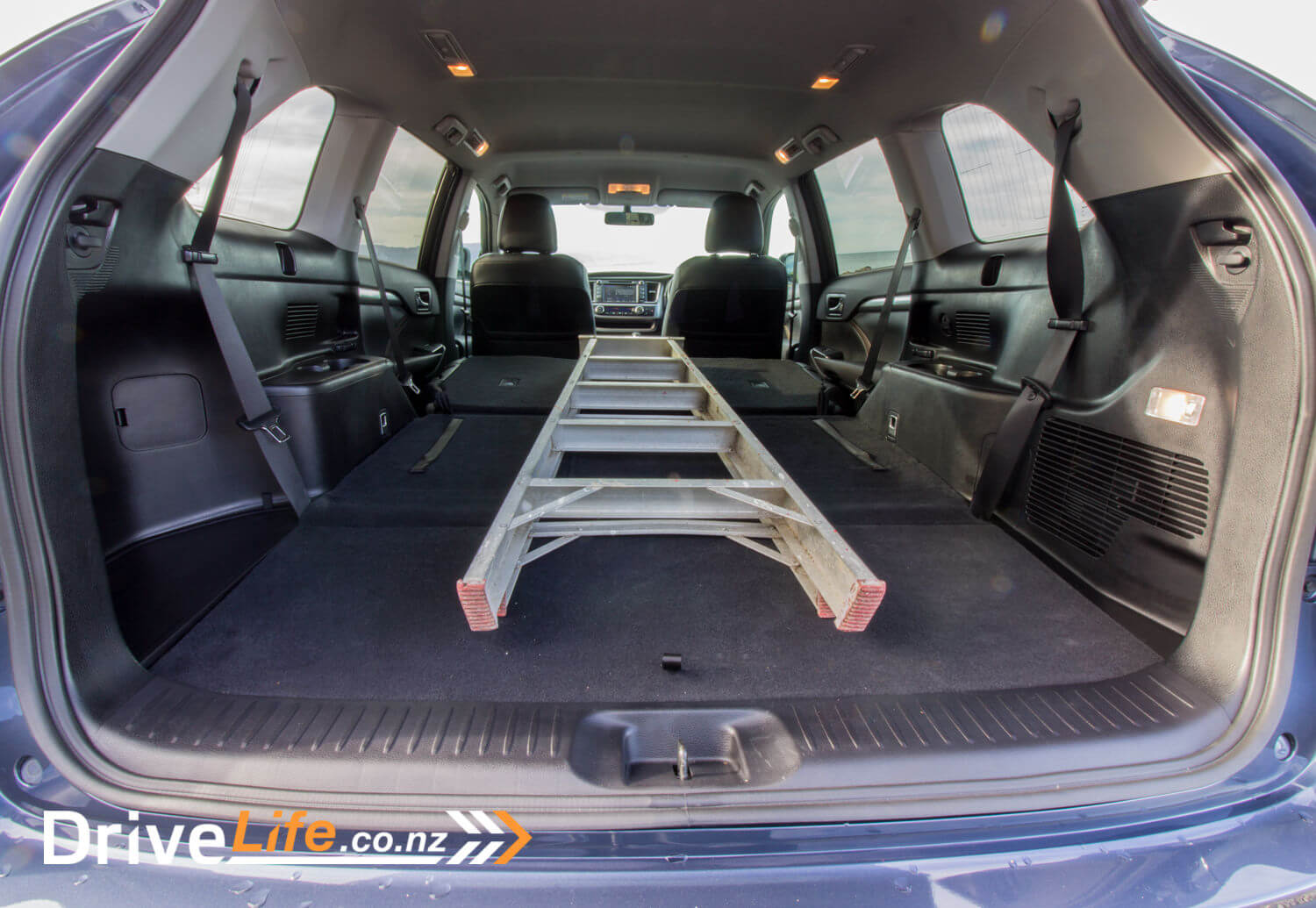
The Drive
As always, first things first: pair up my phone. This took all of 20 seconds. Thank you Toyota for making this quick and easy. Another benefit was the reconnect when you get back in the car – again, very quick. Too many cars take 30 seconds to a minute to reconnect your phone and many will revert back to radio instead of Bluetooth. Toyota does it right.
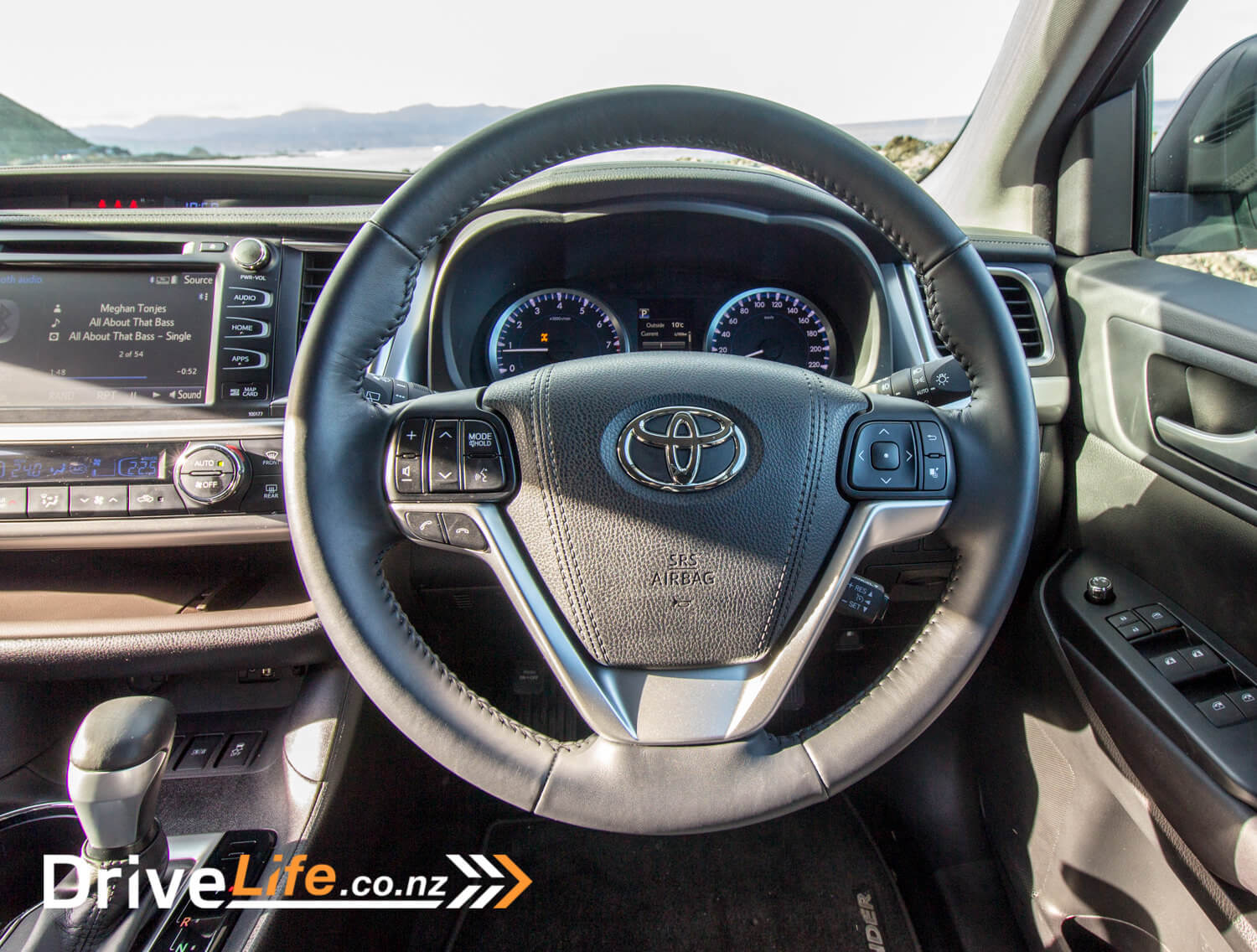
As I headed out of the Toyota dealership, the rain started to come. My first revelation: you don’t get auto wipers in this $61,000 car. Incredibly, you have to go to the top-spec $70,000 Limited model to get such a basic function like auto wipers. Typically for my week with the Highlander, it rained off and on the whole time, so it was old-school intermittent intermingled with turning the wipers off and on.
My second revelation; there seems to be Highlanders everywhere. I know this typically happens – you buy (or for us, test) a car, and then you start seeing them all over the place. But it really felt like every second car was a Highlander. Weird.
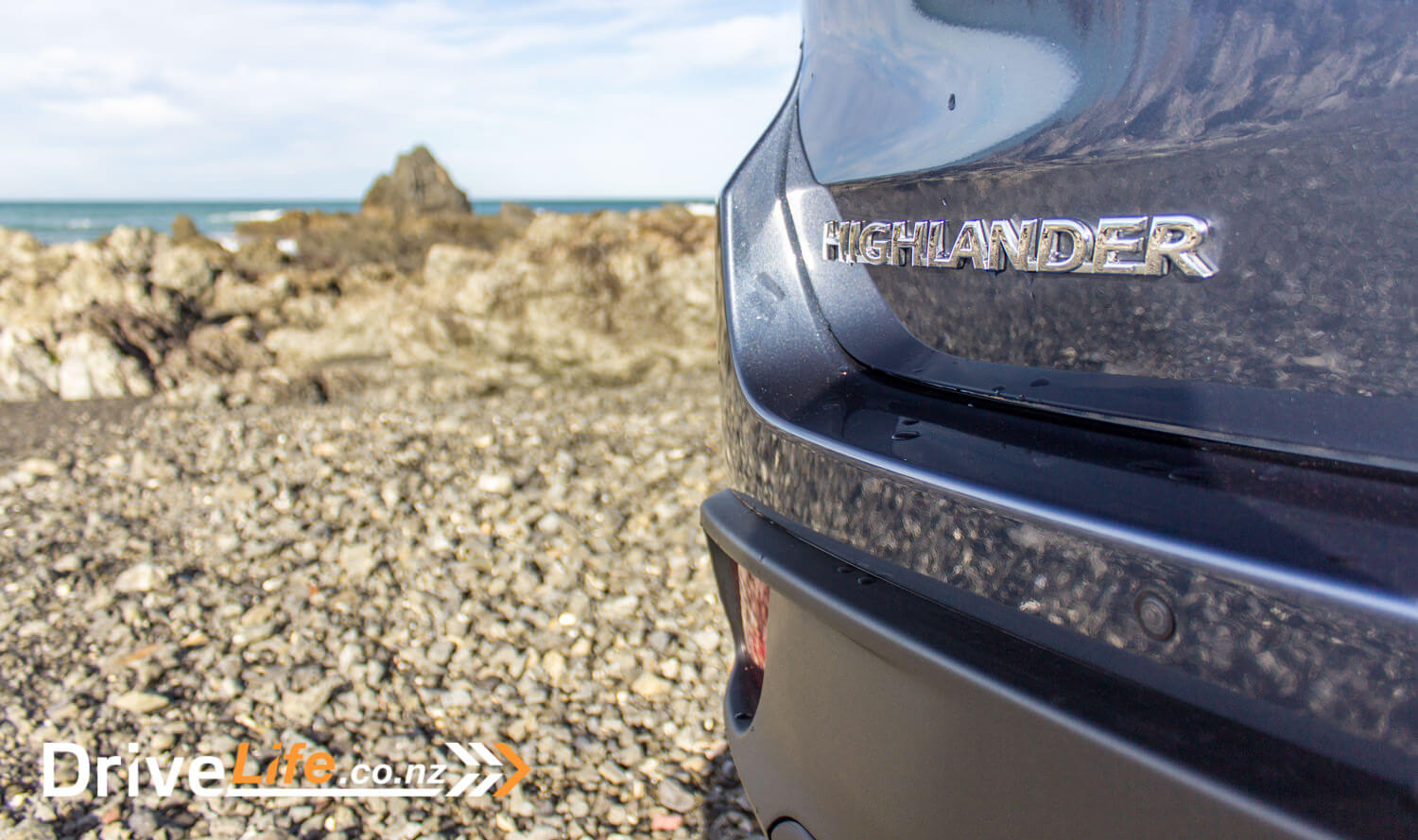
My next surprise was no Blind Spot Monitoring – again, you have to go to the Limited version to get this. Visibility is still good, but BSM should have really only been omitted from the base model.
As you would expect with a car weighing two tonne, the ride is pretty good. Speed bumps are gently crossed over, there’s no suspension noise and it’s just a nice ride.
Around town, you can really feel the size and weight of this car, but the brakes pull you up quickly and with little drama, although there’s not too much feedback given to the driver through the pedal. Ditto the steering – not much feedback, but on an SUV this size and weight, that’s not unusual.
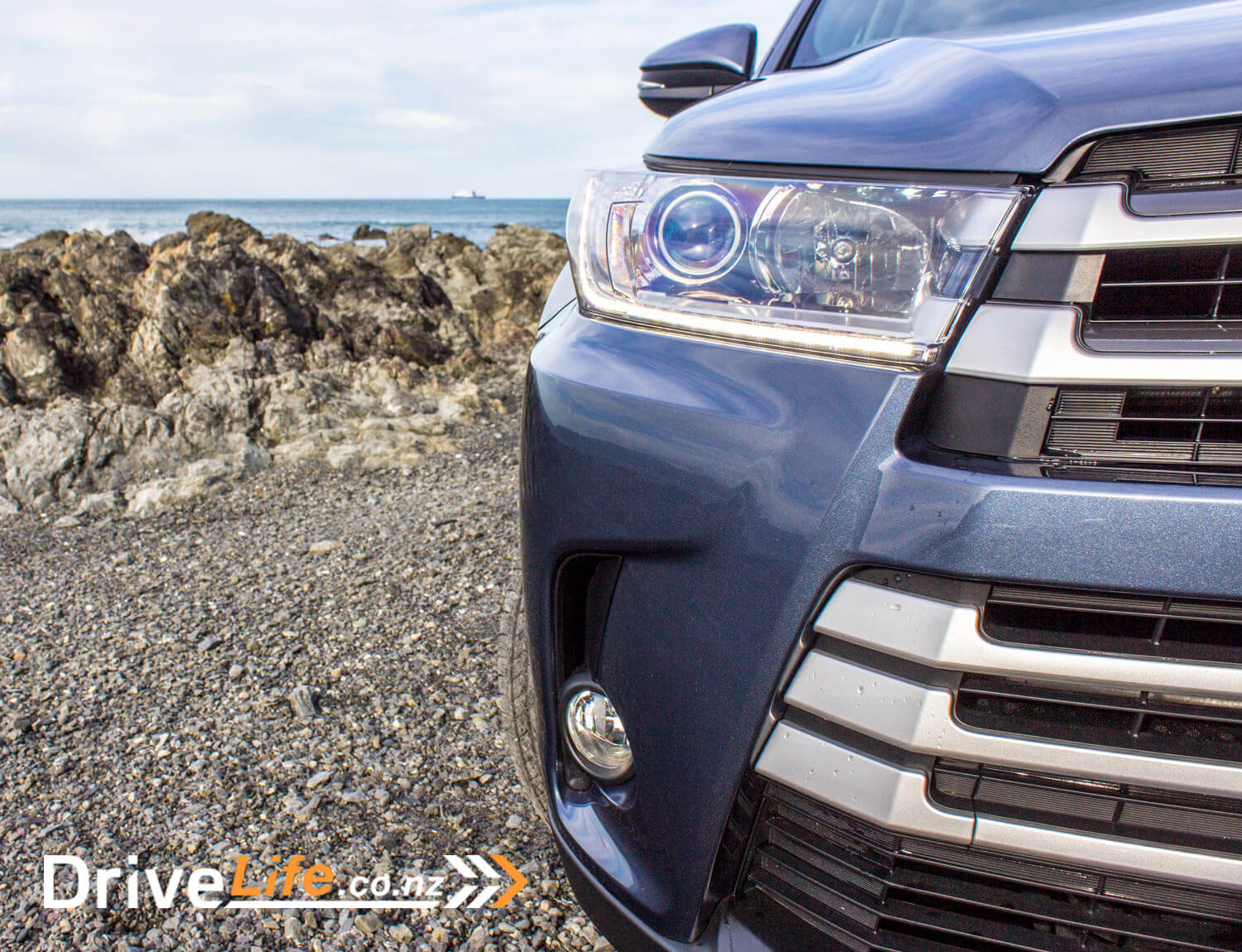
I’ve got to say it was nice to get behind the wheel of a petrol V6 SUV again. It’s hard to go past that V6 sound and feel. Sure, the 1.4 turbo petrol Kodiaq was a great performer, but that V6 driveability is hard to go past. But still, this thing weighs 2000kg…and you can feel it in the performance. It will get up and go if you floor it – especially in Power Mode – and make some nice noises doing it.
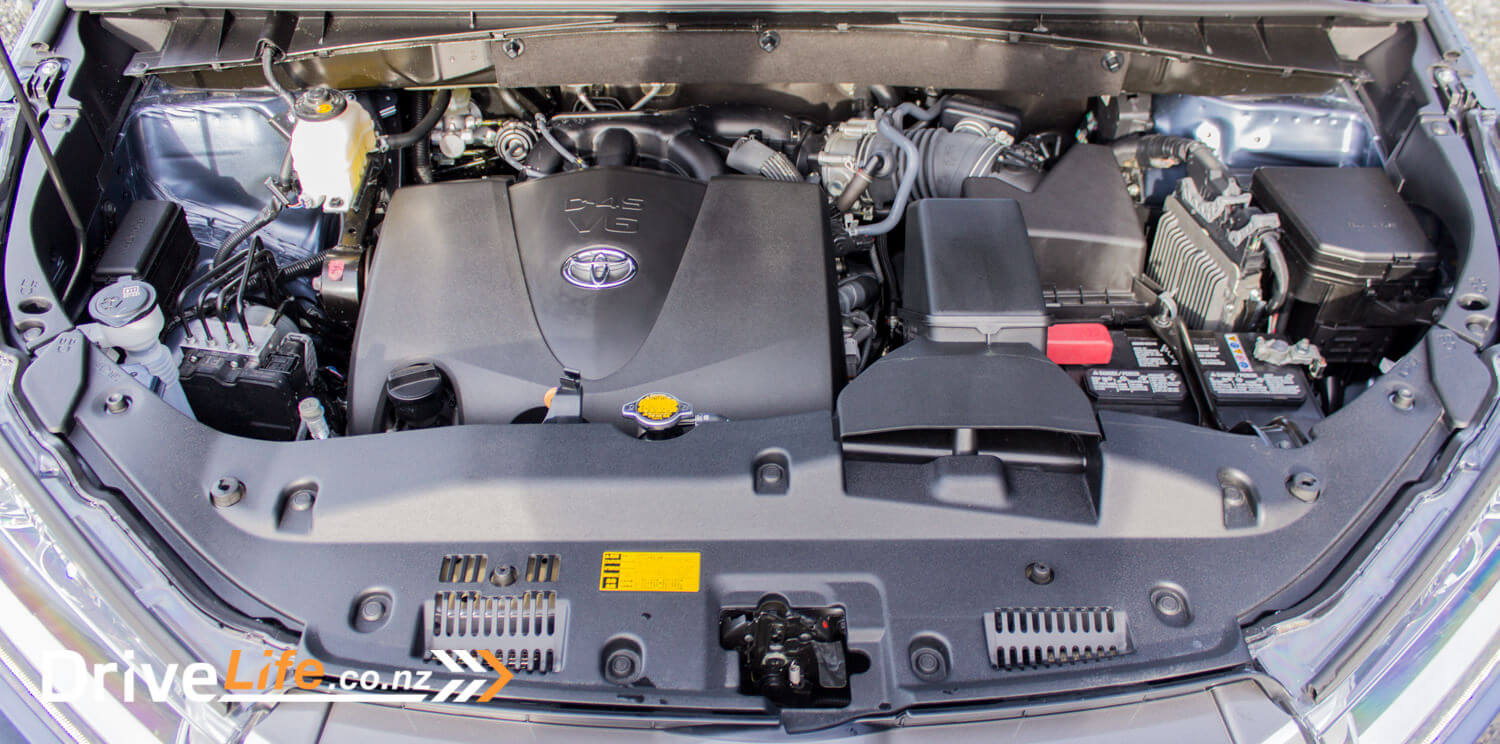
It’s superbly quiet on the motorway and around town on a light to medium throttle – almost no engine noise at all. This can almost be dangerous, as there is no noticeable difference in engine noise between 50 and 60 km/h. Ticket gathering speeds, in other words. Up hills or if you floor it, the engine can be heard, and is unmistakable as a V6. Compared to the Kodiaq though, you can always feel that extra 400Kg.
The all-new 8-speed automatic is a great gearbox; nicely timed changes, silky smooth and no hunting for gears. I seemed to have tested a few autos lately where the transmission can’t seem to make up its mind of what gear it should be in, at low speeds.
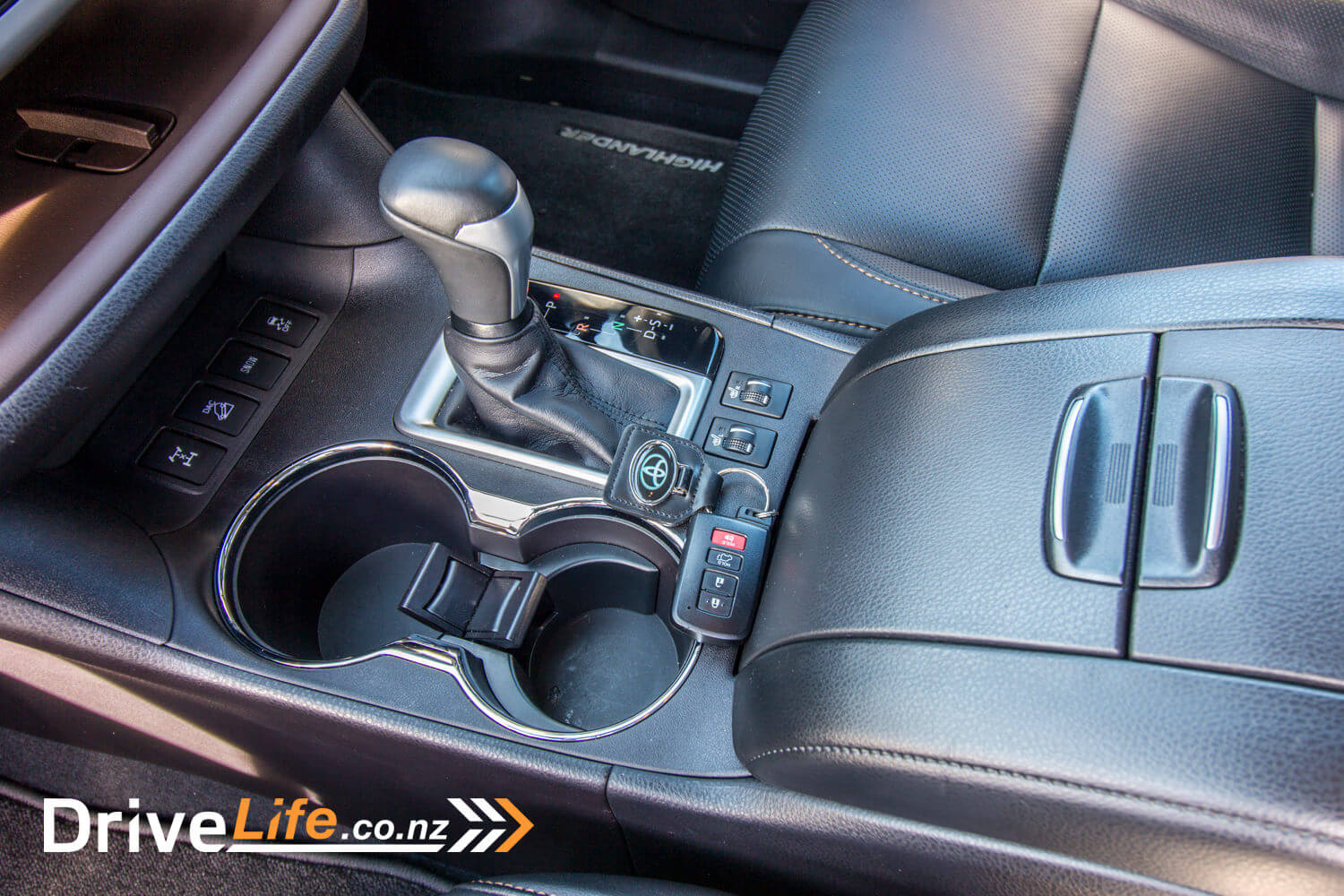
Wind noise is very well controlled, and it’s almost as good as a CX-9 (which is the benchmark) on the motorway. Even in windy weather, there’s little wind noise coming through.
If you do start going around some windier corners, you will get a reasonable amount of body roll and understeer, but the grip from the Michelin Latitude tyres is excellent. There is some tyre noise on anything but smooth surfaces, but on the whole NVH is well up there.
Using SatNav was a no-brainer – if you’ve driven any Toyota with it, then you’ll feel right at home. Bonus points that you get turn-by-turn directions right there in the driver’s information display, perfect. Not was good was the lack of a digital speed readout. Although the speedo is big and relatively easy to read, with such a smooth quiet engine, having a digital speedo is essential.
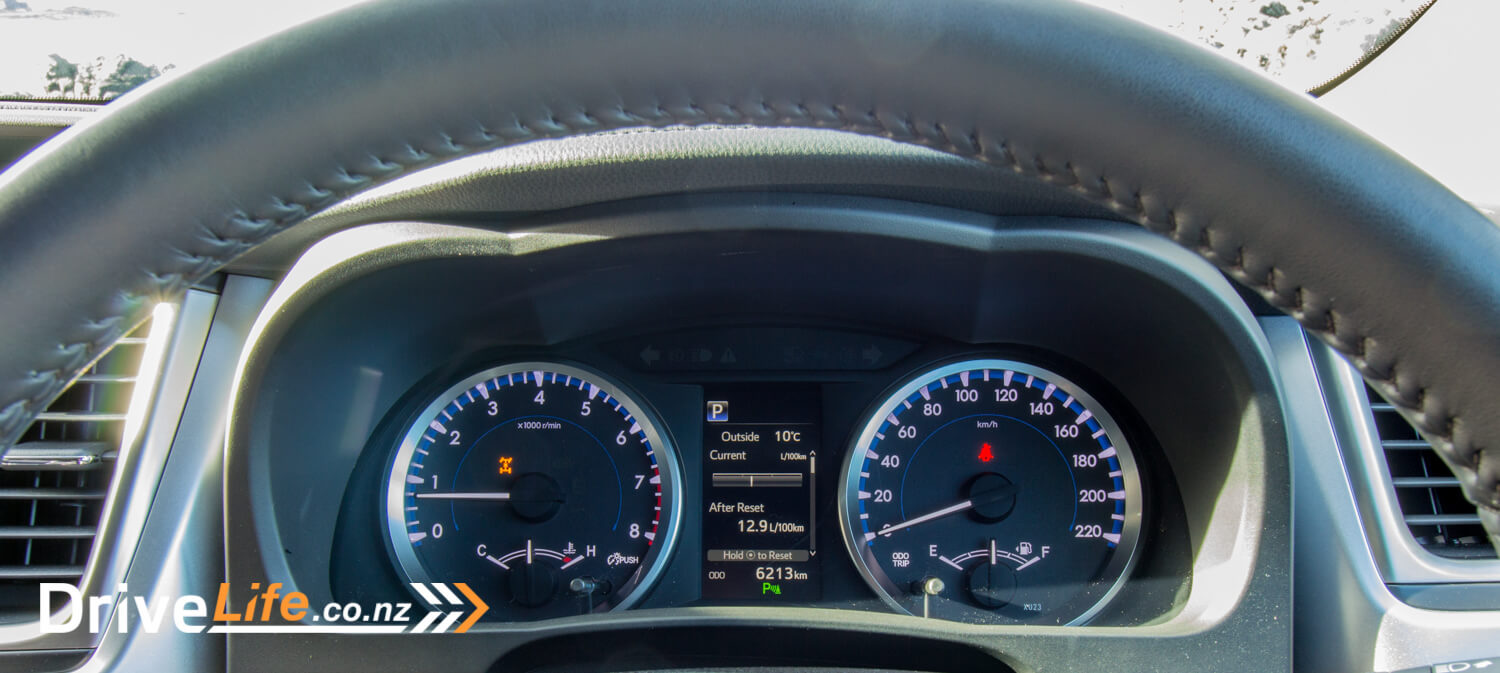
Another weird omission is the reversing camera; all Highlanders have one, but only the Limited model gets moving guidelines – the rest make do with static lines. At this price point, I would have though all models would have moving guidelines.
I did like the built-in speed camera alerts though, that was very welcome.
To get some good photos for this article, I took the Toyota off road a little, to Red Rocks on Wellington’s Southern coast. This meant some wading through water, then crossing sand and rocky beaches. The Highlander took it in its stride, although I put the diff lock on at the start – that 2,000Kg weight was on my mind the whole time, and you can really feel it, especially on the sand. With only 203mm of ground clearance, you aren’t going to get too serious with off roading, but it’s still a capable car.
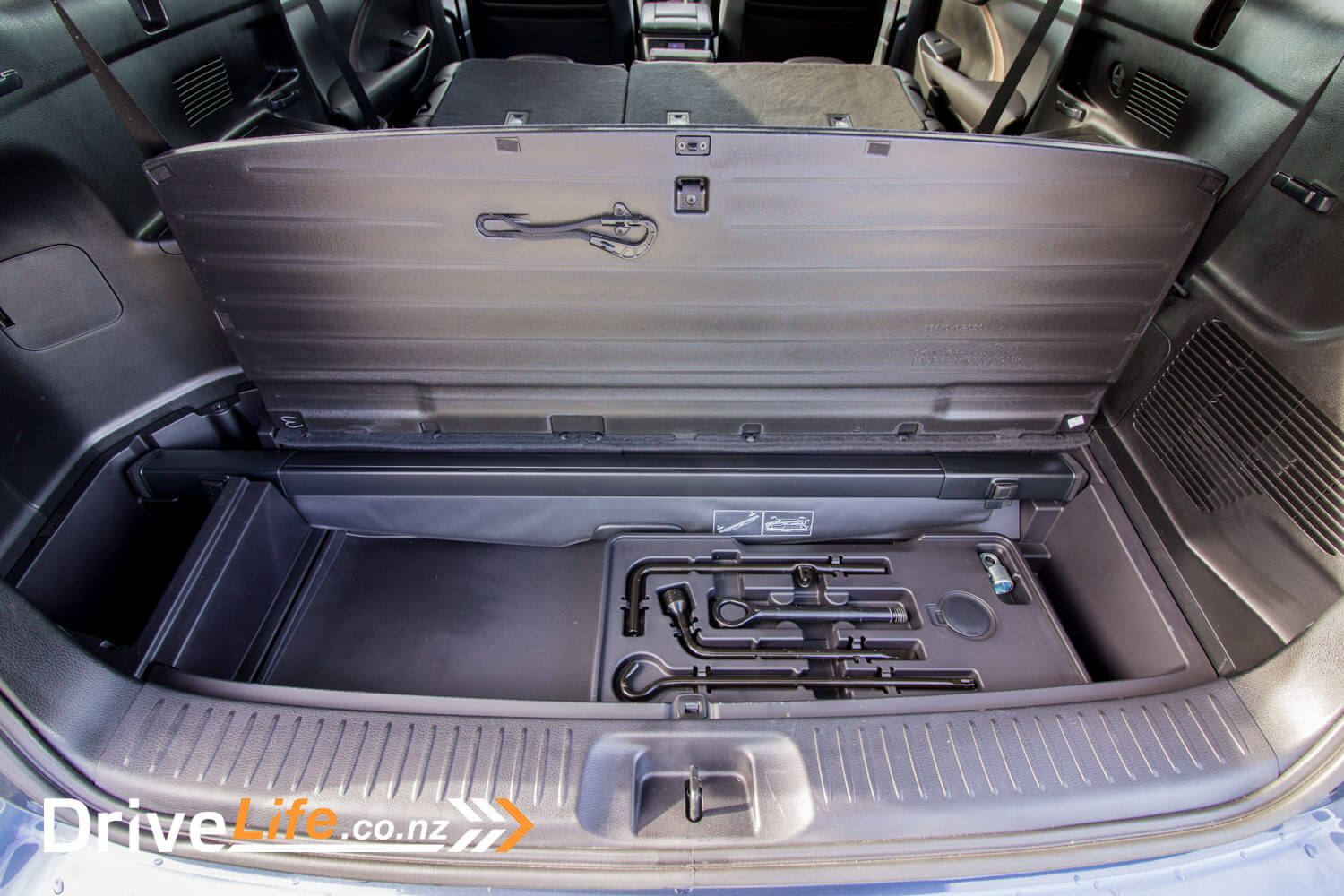
As I drove further along I met up with another 4WD – he suggested that I shouldn’t go much further. “Maybe in a Hilux, but not in that,” were his words. I suddenly felt like an overweight airline passenger getting kicked off a plane. It hurt. My chunky 4WD and I went a bit further, then stopped for pics. I see the Highlander as more of a snow-trip car than an off roader, anyway.
Interestingly and totally unplanned, while I was taking photos a new Mazda CX-9 pulled up and parked not far away from me. I asked first, and took some photos of these direct two competitors in the full-size, 7-seater SUV market. While I was starting to get used to the Highlander’s looks, the CX-9 blows it away in the design stakes. You may not want an SUV that looks amazing and would prefer to blend into the crowd, but boy that CX-9 – in Soul Red too – looks incredible. I’ll let you decide which is better looking in your eyes.
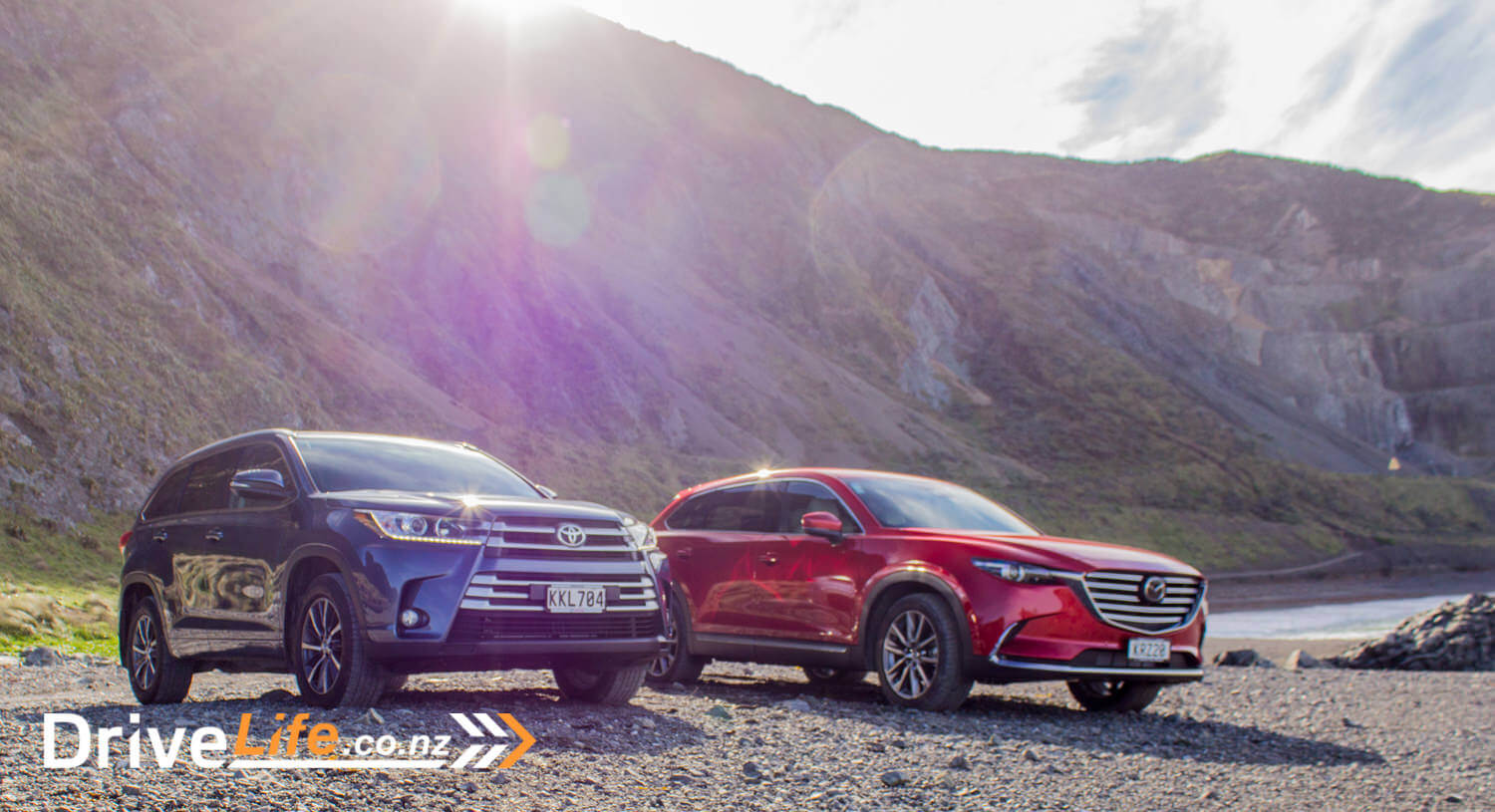
While taking my photos, I had to raise the bonnet – no hydraulic struts, and man is it heavy! I was really surprised Toyota didn’t fit struts here; this car really needs them.
Fuel economy? Toyota suggests a combined rating of 9.5L/100km, but I only managed 13.2l. Mind you I probably did 65% of that around town and some gentle off roading, so it wasn’t a 50/50 split.
The Competition
I opened this review by saying Toyota is still in there with petrol V6 SUVs….but wait, there’s more! All 7-seaters.
| Brand/Model | Engine | Power/Torque | Fuel L/100km | Price – High to Low |
| Ford Everest Trend AWD | 3.2-litre, 5-cylinder, diesel turbo | 143kw/470Nm | 8.5 | $75,990 |
| Isuzu MU-X AWD | 3.0-litre, 4-cylinder, turbo diesel | 130Kw/430Nm | 7.9 | $65,990 |
| Toyota Highlander GXL AWD | 3.5-litre, petrol V6 | 218Kw/350Nm | 9.5 | $61,490 |
| Nissan Pathfinder ST AWD | 3.5-litre, petrol V6 | 202Kw/340Nm | 10.1 | $59,990 |
| Mazda CX-9 GSX AWD | 2.5-litre, 4-cylinder, petrol turbo | 170Kw/420Nm | 8.8 | $55,495 |
| Holden Captiva LTZ AWD | 3.0-litre, petrol V6 | 190Kw/288Nm | 10.1 | $54,990 |
| Mitsubishi Outlander VRX AWD | 2.4-litre, 4-cylinder petrol | 126Kw/224Nm | 7.2 | $54,490 |
| Skoda Kodiaq Style AWD | 1.4-litre, 4-cylinder, petrol turbo | 132Kw/320Nm | 7.4 | $54,290 |
| Kia Sorento LX 2WD | 3.0-litre, petrol V6 | 199Kw/318Nm | 9.9 | $49,990 |
The Pros and Cons
| Pros | Cons |
|
|
What do we think of it?
Here is my struggle; is the Highlander worth $6K more than the CX-9, and almost $7K more than the Kodiaq? Those are both two extremely well built, competent AWD SUVs. So is the Highlander, but you pay a lot more for it, and yet the CX-9 GSX and Kodiaq Style are better equipped.
I fear a buying decision is going to come down to brand choice. Will any buyer of a Highlander GXL have buyer’s remorse? I don’t think so. It does what it was built for perfectly well, with little drama.
Good value? Likely not, but the Highlander is a classic exactly-as-described type of car. You know what you are buying, and that’s what you get.

4.0 Chevrons
| Vehicle Type | Medium-large, full time-4WD, 7-seater SUV |
| Starting Price | $53,490 |
| Tested as Price | $60,490 |
| Engine | 3.5-litre, V6 petrol DOHC with VVTI |
| Transmission | 8-speed automatic |
| Kerb Weight, Kg | 2,030 |
| Length x Width x Height, mm | 4890x1925x1730 |
| Cargo Capacity, litres | 269/813/1872 |
| Fuel Tank, litres | 72 |
| Fuel Economy | Manufacturer’s rating, combined: 9.5 L/100Km
Real World: 13.2 L/100Km |
| ANCAP Safety Ratings | 5 Star |
| Warranty | 3 years/100,000 kilometres |


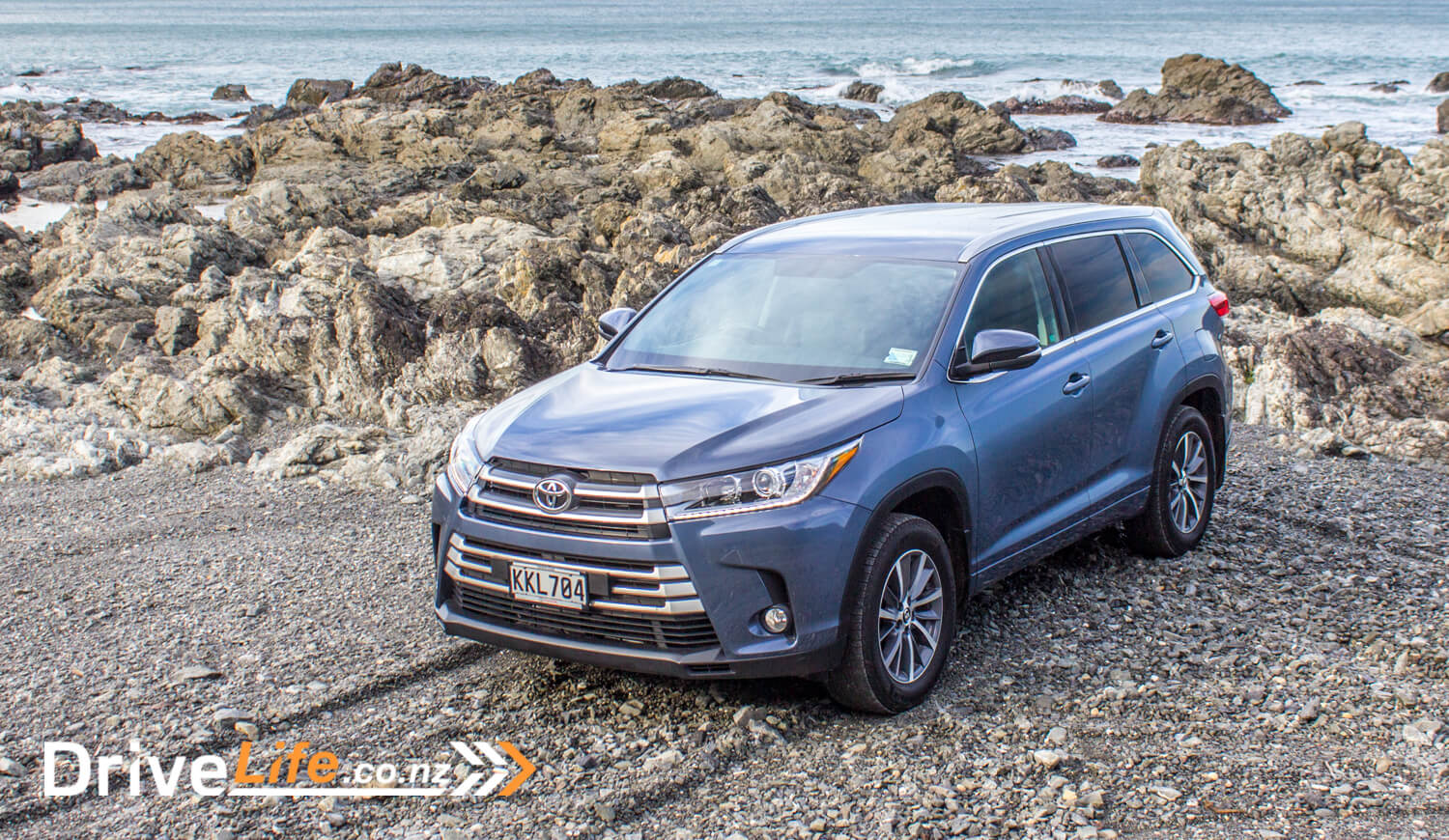











































[…] Read more about the Toyota Highlander on http://www.drivelife.co.nz SUV REVIEWS Toyota […]
Of all the vehicles in the comparison I believe the Highlander, the Mux and maybe the Ranger/ Everest will all still be going after 200000km.Maybe the CX9. The Kodiaq likely will be long dead – highly tuned 1400 GDI with a big body, oil dilution and many computers waiting to blow up. Manual wipers and mechanical handbrake will be much more reliable than the fancy computer run stuff. See what Scotty Kilmer says about this.
If you are only planning to own for a couple of years go for the bells and whistles. For the long haul the Highlander and the MuX have proven records.